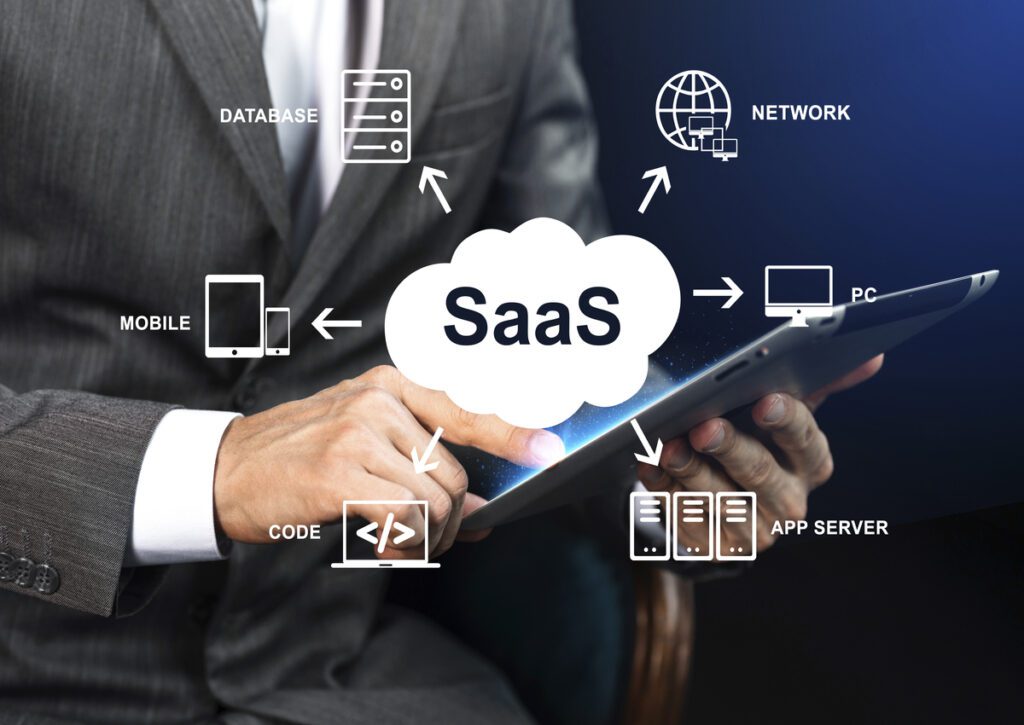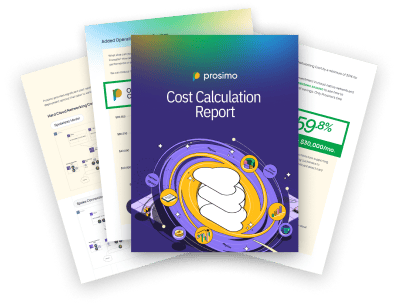In today’s digital world, many organizations use multiple cloud services to store and manage their data. This approach, known as a multi-cloud environment, offers numerous benefits but also presents unique challenges, particularly concerning data privacy. To ensure data remains secure and private across various cloud platforms, it is crucial to follow specific best practices. Here are some essential tips to help you maintain data privacy in multi-cloud environments.

Understanding Multi-Cloud Security
In today’s tech-savvy world, many organizations use a multi-cloud strategy to manage their digital workloads. But what exactly does “multi-cloud security” mean? Let’s break it down.
What is a Multi-Cloud Strategy?
A multi-cloud strategy involves using multiple cloud platforms to handle an organization’s digital tasks. This can include public cloud services like AWS (Amazon Web Services), Microsoft Azure, and Google Cloud Platform, as well as private clouds that the organization manages internally. By spreading their workloads across different clouds, organizations gain several advantages:
- Flexibility: Using multiple clouds allows businesses to choose the best platform for each task, providing more flexibility than relying on a single cloud provider.
- Cost Management: Organizations can optimize costs by selecting the most cost-effective cloud service for each need.
- Avoiding Vendor Lock-In: If a company depends too much on one cloud provider, they might get stuck with high costs or limited options. Using multiple clouds helps avoid this issue.
- Improved Resiliency: If one cloud service experiences an outage, others can continue to operate, ensuring that the organization’s services remain available.
According to a study by Oracle, a whopping 98% of organizations are using at least two different cloud platforms, and 31% are juggling four or more.
The Challenges of Multi-Cloud Security
While a multi-cloud strategy has many benefits, it also comes with its own set of challenges, particularly in terms of security. Managing security across multiple cloud environments can be complex and risky. Here’s why:
- Increased Attack Surface: With multiple cloud platforms, there are more points of entry for potential cyberattacks, increasing the overall risk.
- Diverse Security Vulnerabilities: Each cloud platform has its own security features and vulnerabilities. Keeping track of all these can be daunting.
- Consistent Security Controls: Ensuring that security measures are uniformly applied across all cloud platforms is crucial. Any inconsistency can lead to vulnerabilities that cybercriminals might exploit.
Holistic Approach to Multi-Cloud Security
To effectively secure a multi-cloud environment, organizations need a holistic approach. This means looking at the entire cloud ecosystem and addressing all potential security issues comprehensively. Here are some steps involved:
- Unified Security Policies: Establishing consistent security policies that apply across all cloud platforms helps ensure a unified defense against threats.
- Integrated Security Tools: Using security tools that can work seamlessly across different clouds simplifies management and improves overall security.
- Regular Monitoring and Assessment: Continuously monitoring cloud environments and assessing for vulnerabilities helps in early detection and mitigation of potential threats.
- Training and Awareness: Ensuring that all team members are aware of security best practices and the unique challenges of multi-cloud environments can help prevent human errors that might lead to security breaches.

Why Implement a Multi-Cloud Strategy?
In today’s digital age, businesses are increasingly turning to cloud computing to enhance their operations and drive innovation. One of the most effective approaches is the multi-cloud strategy, which involves utilizing cloud services from multiple providers. This strategy offers several significant benefits that can greatly impact a business’s performance and resilience. Let’s explore why a multi-cloud strategy might be the right choice for your organization.
Specialization and Optimization
A key advantage of a multi-cloud strategy is the ability to choose the best cloud service for specific tasks. Different cloud providers specialize in various areas, and businesses can take advantage of these specializations to optimize their operations. For instance, one provider might offer lower-cost storage solutions, while another might excel in delivering powerful computing instances or advanced analytics and machine learning services. By selecting the right provider for each task, businesses can enhance efficiency and performance.
Cost Efficiency and Negotiation Power
Managing expenses is a critical aspect of any business strategy. By adopting a multi-cloud approach, organizations can leverage the most cost-effective services from different providers. This not only helps in reducing overall costs but also provides a significant advantage when negotiating contracts with cloud providers. Having multiple options allows businesses to play providers against each other to secure the best deals, ensuring they get maximum value for their investment.
Enhanced Disaster Recovery and Business Continuity
Despite the high availability guarantees from cloud providers, outages and disruptions can still occur. A multi-cloud strategy enhances resilience by spreading services across multiple platforms. This setup provides superior disaster recovery options, as businesses can quickly switch to an alternative provider in case of an outage. This ensures continuous operation and minimizes downtime, which is crucial for maintaining customer trust and business reputation.

Navigating Multi-Cloud Security Challenges
In today’s digital age, more and more companies are using multi-cloud environments to manage their data and applications. This means they use services from different cloud providers like Amazon Web Services (AWS), Microsoft Azure, and Google Cloud. However, managing security in a multi-cloud setup can be tricky. Let’s explore some of the main challenges and how to tackle them.
Misconfigured Cloud Configurations or Architecture
One of the biggest risks in a multi-cloud environment is misconfigured cloud resources. This happens when settings or access controls are not set up correctly, potentially exposing sensitive data to the internet or unauthorized users. Imagine leaving your front door unlocked; anyone could walk in. Similarly, if a cloud storage bucket, like an S3 bucket on AWS, is left public without proper restrictions, it could lead to a significant data breach. Misconfigurations can also occur in networking settings, such as having firewall rules that are too permissive or not changing default passwords. These lapses make it easier for attackers to access cloud resources.
To prevent this, technical teams need to meticulously review and continuously monitor cloud configurations. Tools like Cloud Security Posture Management (CSPM) can help automate the detection and correction of these misconfigurations, ensuring that settings align with security best practices.
Insufficient Visibility
In a multi-cloud environment, keeping track of resource usage, performance, and security across different platforms can be challenging. Without comprehensive visibility, organizations can’t effectively identify vulnerabilities or monitor suspicious activities. For instance, if a company uses different tools to monitor traffic in AWS and Azure, it might struggle to detect an attack that spans both clouds.
Using centralized logging and monitoring solutions that gather data from all cloud environments is crucial. These solutions should offer features like anomaly detection and real-time alerts, helping security teams respond quickly, no matter which cloud system is targeted by attackers.
Larger Attack Surface
The complexity and diversity of multi-cloud environments naturally expand the attack surface. Each cloud provider has its own set of services, interfaces, and security controls, which complicates security management. The security of each cloud is only as strong as its weakest link. For example, an API endpoint exposed to the internet in Google Cloud could be a target for attacks, while a poorly configured identity and access management (IAM) policy in AWS could allow unauthorized access to AWS resources.
To mitigate these risks, organizations need to conduct regular security assessments and penetration tests across all cloud environments. This helps identify and address potential vulnerabilities, ensuring that security policies are consistently applied across all platforms.
Shared Responsibility Models
In cloud computing, the shared responsibility model outlines the security responsibilities of both the cloud provider and the customer. However, this model can differ slightly between cloud providers, leading to confusion and potential security gaps. Misunderstanding these responsibilities can result in inadequate security measures or redundant efforts.
Organizations must clearly understand their responsibilities in each cloud environment. They should complement the cloud provider’s controls with their own security measures, such as end-to-end encryption and robust access control management.
Data Governance and Compliance
Managing data governance and compliance is more complex in a multi-cloud setup. Each cloud provider may have different compliance certifications and data protection standards. Additionally, data may be subject to various legal and regulatory requirements based on its location. For instance, a company using AWS to process personal data of EU citizens must ensure GDPR compliance, while data stored in Azure for healthcare applications in the US must comply with HIPAA.
Ensuring consistent data governance and compliance across multiple clouds requires a robust data classification system and compliance monitoring tools. These tools help map out where sensitive data resides and automate compliance reporting and audits, making it easier to adhere to various regulations.

10 Essential Security Practices for Multi-Cloud Environments
When you’re designing your multi-cloud architecture, it’s crucial to follow best practices to secure your infrastructure and workloads. Here’s a detailed guide to help you navigate the complexities of a multi-cloud setup:
1. Robust Authentication and Authorization
Choose a framework that supports various authentication models used by different cloud providers. This framework should allow you to define accounts, roles, and policies centrally. It’s vital to decouple authentication and authorization from any specific cloud service or provider to ensure flexibility and security.
2. Automated Upgrades and Patching
Vulnerabilities and their fixes can vary across cloud providers, even for similar infrastructure or workloads. Automate your software upgrades and patches to be sensitive to the workload and the infrastructure it’s running on, along with its dependencies. This ensures that all your systems remain up-to-date and secure without manual intervention.
3. Comprehensive Component Hardening
Harden your applications and infrastructure components according to the latest security best practices. This includes closing unsecured ports, removing unnecessary software, securing APIs and web interfaces, and enforcing the principle of least privilege for access control. Hardening these components helps mitigate potential security threats.
4. Enhanced Monitoring and Visibility
While single-cloud environments rely on basic security tools from the cloud provider, multi-cloud environments require tools that provide visibility across all clouds. Implementing a tool that supports multiple clouds and offers a holistic view of your systems is essential for detecting, investigating, and responding to cyber threats effectively.
5. Strategic Multi-Cloud Storage
Classify your data and assign sensitive information to the most secure storage resources. Plan the geographical distribution of your data to comply with regulations and implement data loss prevention (DLP) solutions to detect data loss or exfiltration across multiple clouds. This ensures your data is both secure and compliant.
6. Policy Synchronization
To maintain availability across multiple clouds, ensure that your security settings are consistent in all environments. Use automated tools to synchronize policies and settings between different providers. These tools should generate security policies based on generic definitions applicable to all providers, ensuring uniform security measures.
7. Tailored Security Policies
Each workload or application in your multi-cloud environment should have a unique security profile and policies based on its use, the sensitivity of the data it handles, and compliance requirements. Tailoring security policies ensures that each component is protected according to its specific needs.
8. Automation of Security Processes
Extend automation to your security processes by adopting a DevSecOps approach. This means integrating security into every process within your cloud infrastructure. For example, every new virtual machine or container deployed should automatically undergo the necessary security scans. Automation helps maintain a robust security posture.
9. Consolidated Monitoring
Develop a security monitoring strategy that consolidates logs, alerts, and events from all your cloud providers into a single system. Implement automation to trigger relevant responses to alerts, allowing for quick remediation without human intervention. This approach enhances the efficiency and effectiveness of your security operations.
10. Automated Compliance Management
Different cloud platforms have varied compliance certifications and features, and your workloads might have different compliance obligations. Use an automated platform for auditing compliance across clouds, generating reports, and identifying violations with suggested remediations. This ensures continuous compliance and reduces the risk of regulatory issues.
By following these best practices, you can secure your multi-cloud environment, ensuring robust protection for your infrastructure and workloads while maintaining compliance with regulatory requirements.
Conclusion
Securing data privacy in a multi-cloud environment is critical for organizations leveraging multiple cloud services. By following these best practices, businesses can effectively mitigate the risks associated with multi-cloud strategies. Implementing robust authentication and authorization frameworks, automating upgrades and patching, and hardening components are essential steps to ensure a secure infrastructure. Enhanced monitoring and visibility, strategic multi-cloud storage, and policy synchronization help maintain a consistent and compliant security posture across different platforms. Tailoring security policies to specific workloads and automating security processes further strengthen the overall security framework. Consolidating monitoring and automating compliance management streamline operations and ensure continuous protection against potential threats. In summary, a holistic approach to multi-cloud security not only safeguards sensitive data but also enhances business resilience and operational efficiency. By prioritizing these best practices, organizations can confidently navigate the complexities of multi-cloud environments while maintaining high standards of data privacy and security.
FAQs in Multi-Cloud Best Practices
1. What is a multi-cloud environment?
A multi-cloud environment refers to using multiple cloud services from different providers to manage and store data. This strategy offers flexibility, cost optimization, and improved resiliency by distributing workloads across various cloud platforms.
2. Why is multi-cloud security important?
Multi-cloud security is crucial because managing multiple cloud platforms increases the complexity and risk of cyber threats. Ensuring consistent security controls and monitoring across all platforms helps protect sensitive data and maintain compliance with regulations.
3. How can organizations automate security in a multi-cloud setup?
Organizations can automate security by adopting a DevSecOps approach, integrating security into every process within the cloud infrastructure. Tools for automated upgrades, patching, security scans, and compliance audits are essential to maintain robust security.
4. What challenges do businesses face in a multi-cloud environment?
Businesses face challenges such as increased attack surfaces, diverse security vulnerabilities, and the complexity of maintaining consistent security controls across different platforms. Additionally, managing data governance and compliance across multiple clouds can be difficult.
5. How can data privacy be maintained in a multi-cloud environment?
Maintaining data privacy in a multi-cloud environment involves implementing robust authentication and authorization frameworks, strategic data classification, and secure storage solutions. Regular monitoring, policy synchronization, and automated compliance management are also crucial for safeguarding data.
